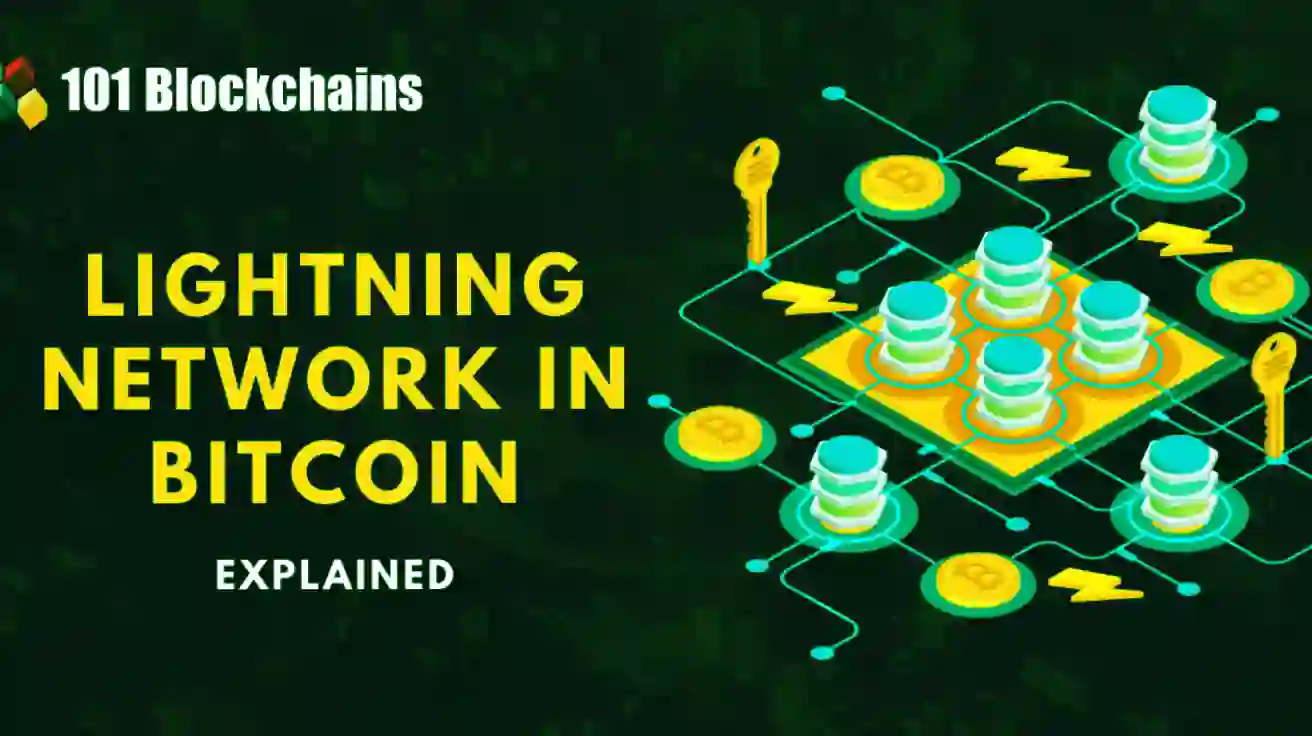In the digital frontier of finance, Bitcoin, the pioneering cryptocurrency, has faced a formidable challenge: scalability. While its decentralized nature and cryptographic security have captivated the world, its inherent design has presented a bottleneck in processing transactions. Imagine a bustling marketplace where only a single, narrow lane allows passage; congestion is inevitable. This is the predicament Bitcoin found itself in, where the very principles that secured its integrity also hindered its ability to function as a swift, practical medium of exchange.
The core issue lies within Bitcoin’s blockchain, a digital ledger where every transaction is recorded. Each “block” in this chain, a bundled collection of transactions, has a finite capacity. If your transaction isn’t included in the current block, it languishes in a holding area, the “mempool,” awaiting its turn. This queue can stretch from minutes to hours, even days, depending on the network’s traffic. Furthermore, the energy-intensive “proof-of-work” consensus mechanism, where miners solve complex puzzles to validate transactions, translates into transaction fees. As the network’s popularity surges, these fees escalate, prioritizing those willing to pay the highest premium.
This inherent tension between security and speed, between decentralization and practicality, spurred the quest for a solution. Enter the Lightning Network, a revolutionary concept designed to inject a jolt of speed and efficiency into Bitcoin’s circulatory system.
A Second Layer of Innovation
The Lightning Network isn’t a replacement for Bitcoin; it’s an augmentation, a “second-layer” protocol built atop the existing blockchain. Think of it as constructing a network of express lanes alongside a congested highway. It operates through a system of “channels,” direct, peer-to-peer pathways for transactions. These channels allow individuals or entities to exchange Bitcoin without constantly broadcasting every transaction to the main blockchain.
This approach mirrors the mechanics of conventional payment systems, where immediate verification of funds precedes the actual settlement. When you swipe a card, the transaction isn’t instantly finalized; a quick check confirms your balance, and the actual transfer occurs later. The Lightning Network adopts a similar model, enabling near-instantaneous confirmations while deferring the final settlement to the Bitcoin blockchain.
The Genesis of Lightning
The seeds of the Lightning Network were sown in the fertile mind of Satoshi Nakamoto, Bitcoin’s enigmatic creator. However, it was the intellectual rigor of researchers Joseph Poon and Thaddeus Dryja, who formalized the concept in their 2016 white paper, that brought it into sharp focus. They proposed a network of micropayment channels as a viable alternative to altering Bitcoin’s core structure.
Lightning Labs, a pioneering blockchain engineering firm, played a pivotal role in realizing this vision, launching a beta version of the Lightning Network in 2018. This endeavor was bolstered by the collaborative efforts of numerous individuals and organizations, including ACINQ and Blockstream, and fueled by investments from visionaries like Jack Dorsey.
This is excellent @tippin_me ⚡️ https://t.co/FifrgwBOTp
— jack (@jack) February 20, 2019
How the Lightning Strikes
The Lightning Network’s speed and cost-effectiveness stem from its ability to bypass the main Bitcoin blockchain for routine transactions. It establishes an unstructured network of interconnected nodes, each running specialized software. These nodes facilitate the creation and maintenance of payment channels.
To participate, users lock a portion of their Bitcoin into a multi-signature wallet, a shared account requiring multiple keys for authorization. This establishes the initial balance within the channel. Transactions are then executed by updating the balance sheet, a record of each participant’s holdings. Each update is digitally signed, ensuring accountability.
When a transaction is initiated, the recipient generates an invoice, a unique alphanumeric string often represented as a QR code. The payer scans this invoice with their Lightning wallet, signing the transaction to confirm payment. This confirmation is relayed across the network, typically within seconds, earning the network its “Lightning” moniker.
🤭 The Chrome extension that places a https://t.co/NVpjMUDdfJ button in every Tweet is here.https://t.co/Ra3de5dr50#LightningNetwork #LNTrustChain pic.twitter.com/FIx5zBbZfb
— Tippin (@tippin_me) February 14, 2019
Because these transactions occur off-chain, they avoid the delays and fees associated with direct blockchain interactions. This enables the execution of micropayments, transactions as small as a single satoshi, the smallest unit of Bitcoin.
Once a user concludes their activity on the network, they can close the channel, and the final balance sheet is recorded on the Bitcoin blockchain. This process ensures the integrity and permanence of the transaction history.
Navigating the Lightning Landscape
To engage with the Lightning Network, users can either operate a node or utilize a Lightning wallet. Running a node grants complete control and autonomy, transforming your computer into a personal bank. However, it requires technical proficiency. For those seeking a simpler approach, Lightning wallets, such as the Bitcoin Lightning Wallet for Android and Blue Wallet for iOS and Android, offer user-friendly interfaces.
The Bitcoin Lightning Wallet provides a non-custodial experience, where users retain control of their private keys. Blue Wallet, conversely, offers a custodial service, managing the node and funds on behalf of the user.
For those venturing into node operation, Eclair Lightning Node presents a robust platform. Eclair Mobile, its Android counterpart, offers a streamlined experience, though it currently supports only sending, not receiving, payments.
Lightning Joule, a browser extension, further enhances accessibility, enabling seamless integration with Lightning nodes for web-based transactions.
Beyond Basic Transactions
The Lightning Network extends beyond simple peer-to-peer transactions. Its integration into websites and online platforms facilitates direct payments without intermediaries. Cryptocurrency exchanges like Bitfinex and MercuriEX, online retailers such as Bitrefill, and a growing number of service providers are embracing Lightning.
Lightning faucets, repositories of small Bitcoin amounts, offer a low-risk way to experiment with the network. Social media platforms are also integrating Lightning, allowing users to tip each other in satoshis through services like Tippin.me.
Visualizing the Network’s Growth
The Lightning Network’s intricate topology can be challenging to grasp. Tools like 1ML, a search and analysis engine, provide visual representations of the network’s interconnected nodes and channels. These visualizations, ranging from overhead diagrams to immersive 3D and VR experiences, offer a tangible sense of the network’s scale and complexity.
The Network’s Evolution
Like any nascent technology, the Lightning Network has encountered growing pains. Early challenges, such as distributed denial-of-service attacks, have prompted the implementation of robust security measures. The network has continued to expand, boasting thousands of nodes and channels, with a steadily increasing capacity.
Looking Ahead
The Lightning Network’s potential to address Bitcoin’s scalability challenges has ignited widespread interest. Updates like the Wumbo function, which allows for larger channel capacities, are further enhancing its capabilities.
Cryptocurrency exchanges and financial platforms are increasingly integrating Lightning support. El Salvador’s adoption of Bitcoin as legal tender, leveraging the Lightning Network for everyday transactions, marks a significant milestone.
The development of protocols like Taro, enabling stablecoin transactions on Lightning, expands its utility beyond Bitcoin. And the expansion of the Lightning network to other blockchains, like Litecoin, shows the versatility of the technology.
The Lightning Network represents a paradigm shift in cryptocurrency transactions, offering a glimpse into a future where digital currencies are as seamless and efficient as traditional payment systems. It is a testament to the ingenuity of the Bitcoin community and a symbol of the ongoing evolution of decentralized finance.



